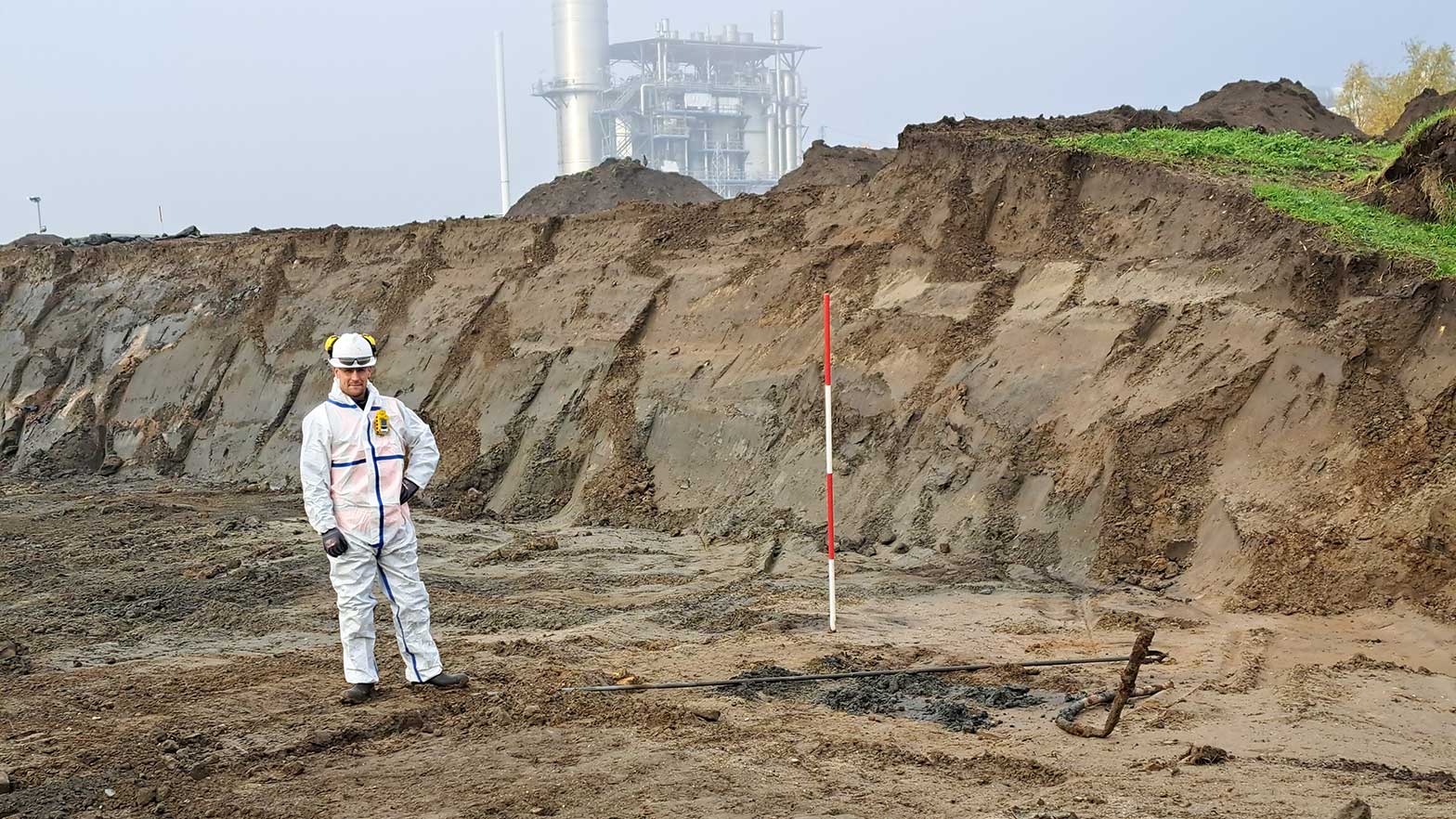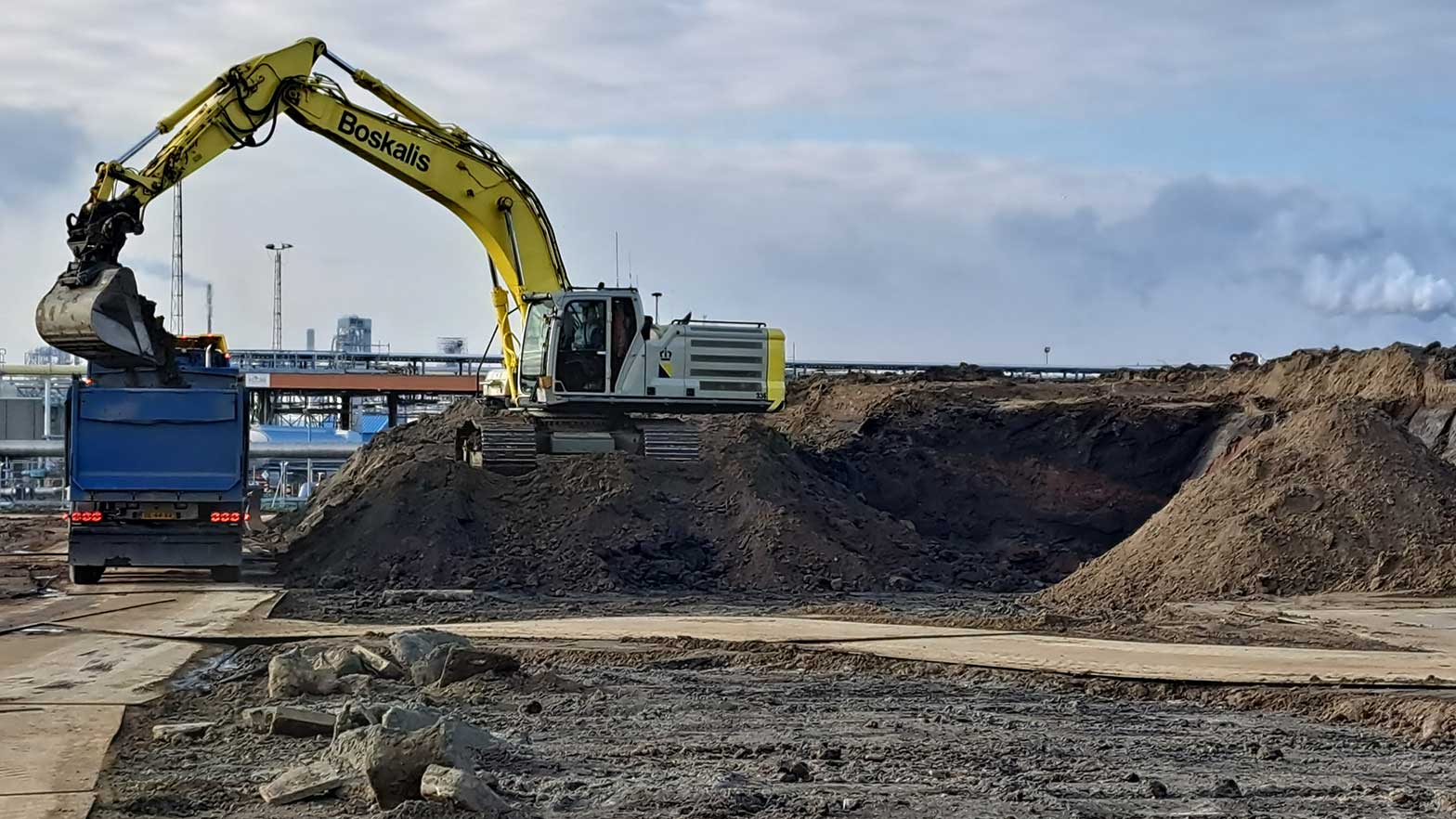our operations
rotterdam landfill gets new lease on life
2 min read | may 26, 2023
Employees from Chevron, BP and environmental agency DCMR recently joined to rehabilitate a landfill in the Port of Rotterdam.
Chevron is teaming with BP and environmental agency DCMR to rehabilitate Rabbit Hill, a landfill in the Port of Rotterdam. The longstanding restoration project in the Netherlands aims to bring new opportunities to the major international trade hub.
how it started
Our operations in the port—one of the largest in the world—began in 1948. For the better part of a century, Chevron and many other operators used Rabbit Hill for waste disposal.

For decades, oil and gas producers used Rabbit Hill for waste disposal.
how it’s going
Though our activities at the Port of Rotterdam ended in 2007, our work at the site wasn’t finished. Since then, other parties have used the property as we have worked to restore the area.
“Some people think this is just an excavation, but there’s a lot more to it than that,” said Ivanska Fontanez, an environmental scientist with Chevron who has been part of the soil removal project since 2020. “We started with a mountain, and now we’re screening four meters below the surface to see what kind of impact there was.”
Our remediation efforts will allow the port to repurpose the area, which could benefit both the next operator and the port at large.
the work
Remediation is the process of cleaning up a former site—residential, commercial or industrial site. At Rabbit Hill, that means removing soil that may have been affected during our operations.
“In the Netherlands, you can treat and reuse soil,” Fontanez said. “In the end, we’ll be able to show the amount of progress we made.”
Because the port is an essential international trade and economic center, doing the work right is especially important, Fontanez added.

The team’s remediation efforts will allow the port to repurpose the surrounding area.
the technology
Using digital mapping, which involves converting data into a geographical display, the Rabbit Hill remediation project is on track to remove approximately 60,000 metric tons (65,000 US tons) of impacted soil.
“The excavator has GPS control and screens that show operators where and how deep to dig,” Fontanez explained. “It helped identify the areas where we were taking the soil and manage the different waste streams.”
The high-tech process also allowed for a full remote cleanup with no crew on-site—boosting both efficiency and safety.
what’s next
In partnership with the Port of Rotterdam and others, our goal is to ready Rabbit Hill for its next chapter.
The soil removal project is expected to be completed by the end the year.
topics covered
related content
-

 new technologies speed offshore development
new technologies speed offshore developmentour operationsjune 27, 2024
-

 how technology unlocked the permian basin’s potential
how technology unlocked the permian basin’s potentialour operationsjune 07, 2024
-

 spotlighting 25 years of innovation
spotlighting 25 years of innovationour operationsmay 23, 2024
-

 california regulations could cut supply, raise gasoline prices says chevron exec
california regulations could cut supply, raise gasoline prices says chevron execour operationsmay 22, 2024
chevron email updates
Subscribe to our newsletter to receive news and updates.



